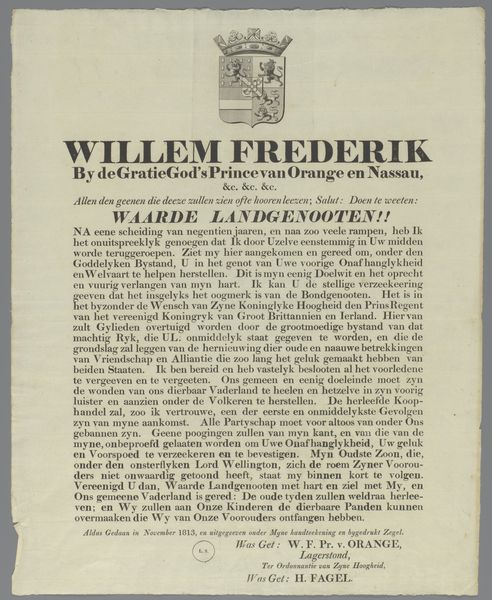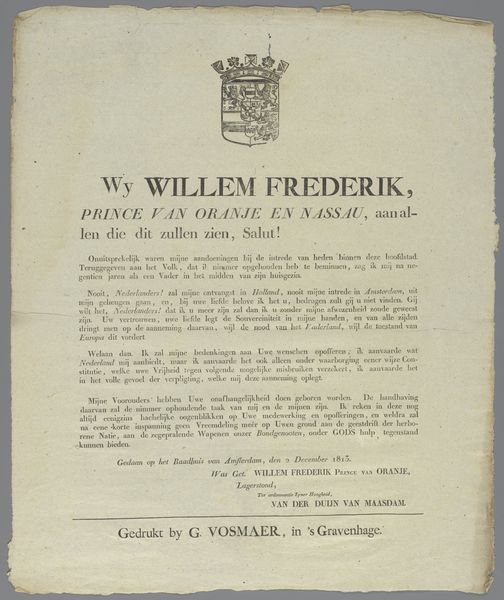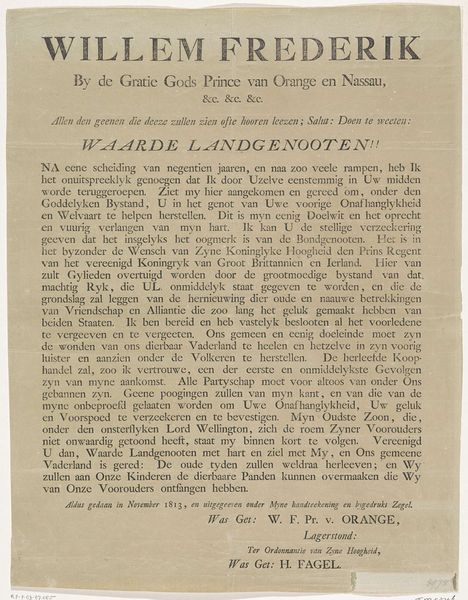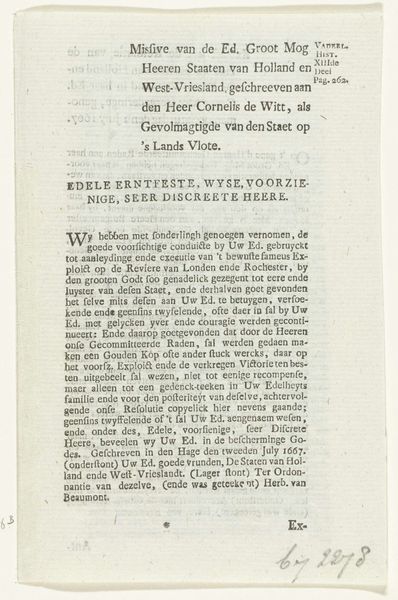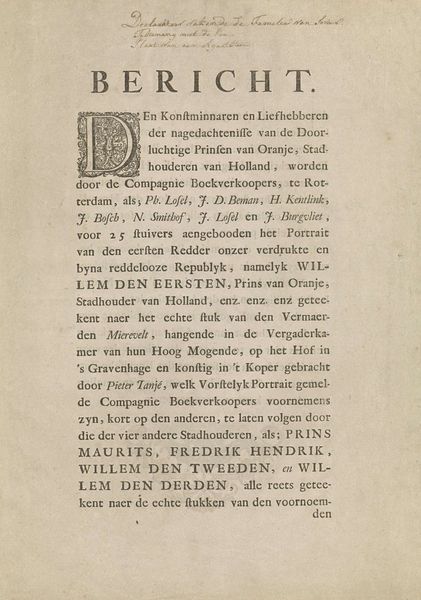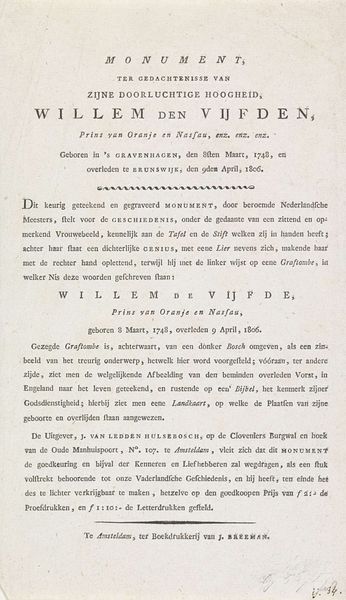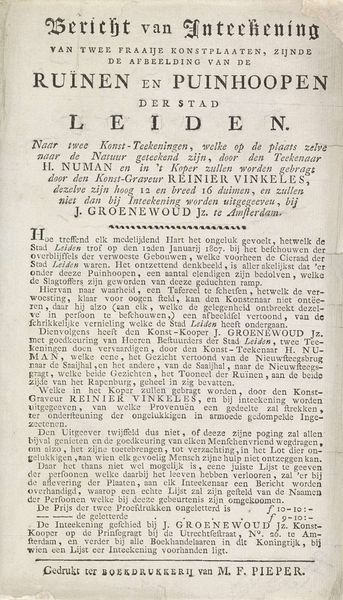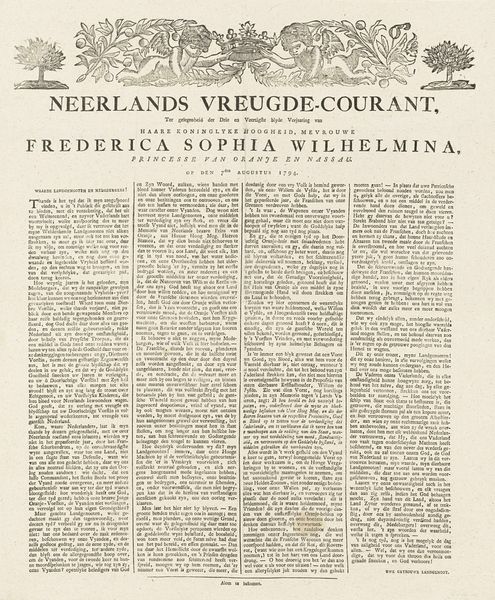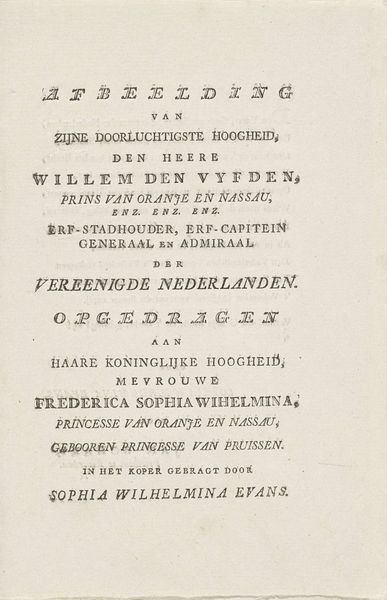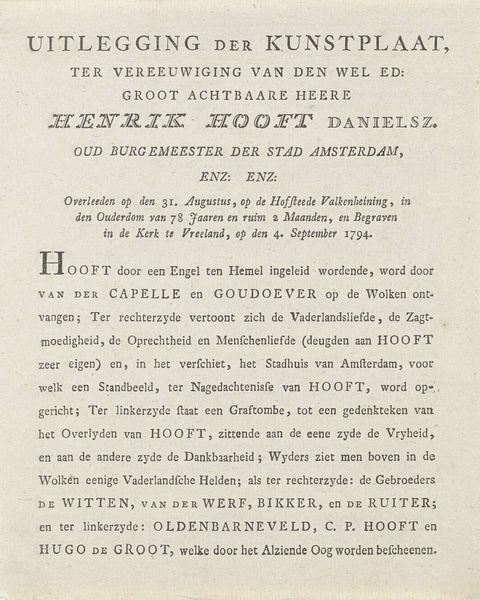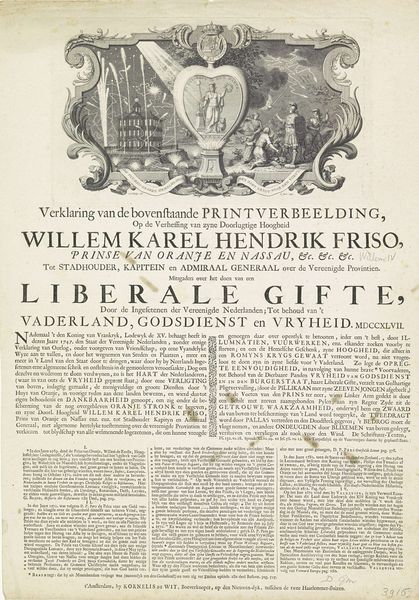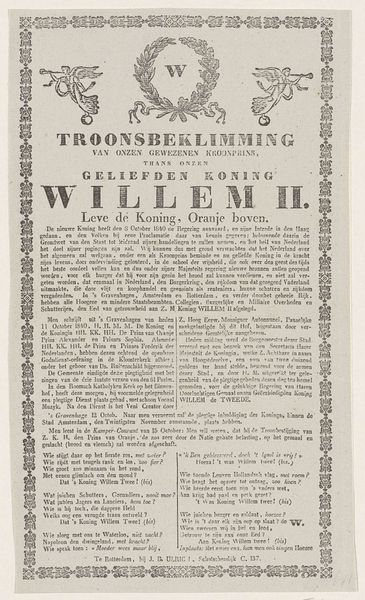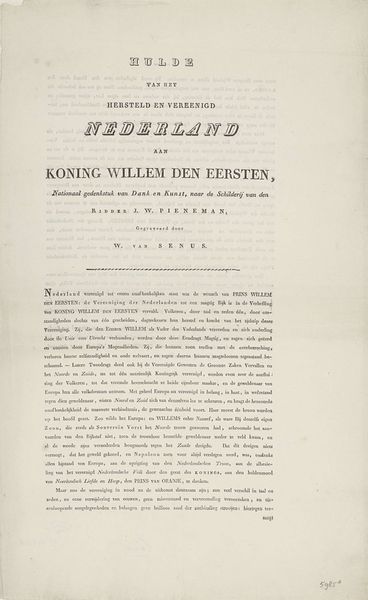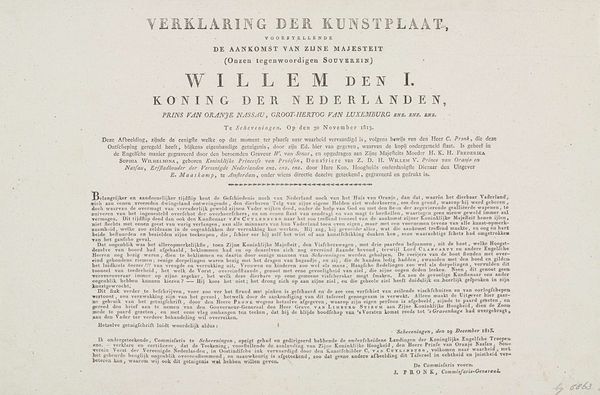
print, textile, typography, poster
#
neoclacissism
# print
#
textile
#
typography
#
history-painting
#
poster
Dimensions: height 495 mm, width 360 mm
Copyright: Rijks Museum: Open Domain
Curator: Looking at this striking piece from 1813, entitled "Proclamatie van de Prins van Oranje bij zijn aankomst in Scheveningen," which translates to "Proclamation of the Prince of Orange upon his arrival in Scheveningen", you’re immediately met with its message. It's unsigned, or rather, signed by William Frederick, Prince of Orange and Nassau. It's a print, almost a poster really, likely meant to be distributed widely. What impressions strike you first? Editor: Honestly, it feels surprisingly hopeful, even regal, considering it’s a text-based image. The typeface and layout give off a classical, almost Neoclassical vibe, don't you think? Like it’s trying to establish a new order. Curator: Exactly. Neoclassicism was about harkening back to an idealized past. Note the Prince's crest right at the top, invoking heraldry. And it is a historical event: William Frederick's return to the Netherlands after years of exile. Symbolically powerful. Editor: Absolutely. The lions rampant, the crown—classic symbols of authority. The Prince emphasizes themes such as freedom and wealth through it. He positions himself as a restorer of lost glories. Also consider who this image is for. Curator: It directly addresses "Waarde Landgenooten," or "Dear Compatriots." He calls for unity after a turbulent period marked by separation and adversity, referring to the French occupation under Napoleon. Editor: And promises a return to that older state, echoing in how he emphasizes an older style visually as well as discursively. He also mentions old ties that made the "happiness" of the States, namely Great Britain. Even more clearly, a connection is constructed between Prince, compatriots, and shared country as children can continue traditions received from elders. All strong stuff in connecting to people on a primal, familial level. Curator: Definitely, this isn't just news; it's carefully crafted propaganda, designed to instill faith in his leadership. Editor: The visual style here communicates trust and permanence, something to rally around, really driving home that powerful sense of collective identity. It presents, on its own, a national standard to fall in line behind. Curator: Yes, absolutely. A visual embodiment of a pivotal moment in Dutch history. It is hard not to appreciate its lasting historical value.
Comments
No comments
Be the first to comment and join the conversation on the ultimate creative platform.
